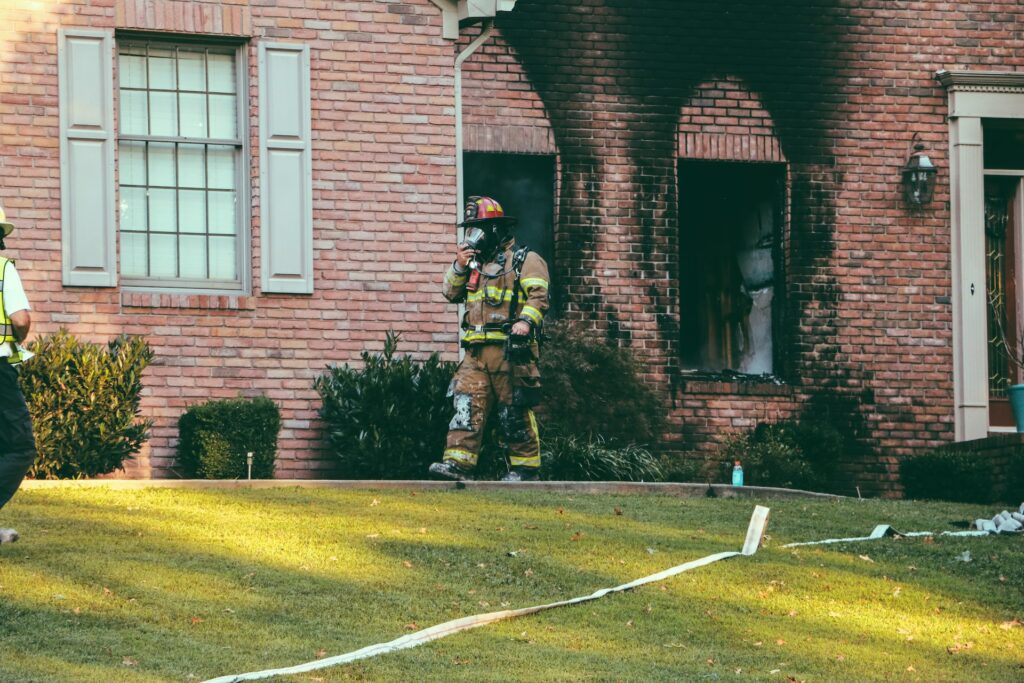Experiencing a fire or water damage incident can be devastating for any homeowner. The aftermath can leave you feeling overwhelmed and unsure of what actions to take to recover and restore your living space. However, with the right knowledge, guidance, and support, you can overcome these challenges and transform your home into a sanctuary that’s even better than before.
One of the most crucial aspects of fire and water damage restoration is understanding the extent of the damage and devising a tailored plan to address the specific needs of your property. This process typically begins by conducting a thorough assessment of the affected areas, identifying any structural damage, potential hazards, and the extent of water, soot, or smoke damage. Additionally, evaluating the scope of the damage will help you determine whether professional guidance and support are required.
Enlisting the expertise of specialist home restoration companies, like BMR Homes, can be invaluable in navigating the complex process of restoring a fire or water-damaged property. Their experience and expertise will ensure that your restoration project is handled with care, adhering to industry standards and best practices while catering to your specific needs and preferences.
In this guide, we’ll cover safety precautions, assessing the damage after a fire or water incident, and determining the steps necessary for a successful restoration, including cleaning, drying, dehumidification, and applying professional-grade odor removal treatments. We’ll also discuss how to approach certain repairs, such as replacing damaged drywall, insulation, flooring, or electrical systems.
Prioritizing Safety during the Restoration Process
Before commencing any fire or water damage restoration work, safety should always be your top priority. Ensure that all necessary precautions are taken to protect both the homeowners and restoration professionals involved in the project. To prioritize safety, consider the following steps:
- Evaluate structural stability: Before entering the premises, consult with professionals to assess the structural integrity of the building and determine if it is safe to proceed.
- Turn off utilities: To prevent fire, electric shock, or gas leaks, switch off all utilities, including electricity, gas, and water supply, until the restoration process is complete.
- Use personal protective equipment (PPE): During the restoration process, wear appropriate PPE, such as gloves, masks, goggles, and boots, to protect against potential health hazards and contamination.
- Ventilate the area: Proper ventilation helps to reduce the risk of exposure to harmful substances, such as mold spores, smoke, and soot. Open windows and doors and use fans or air purifiers to improve air circulation.
Assessing Damage and Determining Scope of Restoration
A thorough assessment of the fire or water-damaged property is essential to determine the extent of the damage and to devise a tailored restoration plan. This process may include the following steps:
- Inspect structural components: Examine the building’s framework, walls, ceilings, and floors for signs of damage, such as weakened supports, rotting wood, or charring.
- Evaluate water damage: Assess the severity and extent of water damage, including potential mold growth, waterlogged materials, and bacterial contamination.
- Identify fire and smoke damage: Inspect for visible and hidden damage caused by fire, soot, and smoke, including discoloration, structural weakness, and odors.
- Document the damage: Take photographs and maintain detailed records of the damaged areas, items, and materials to facilitate insurance claims and restoration planning.
Cleaning, Drying, and Dehumidification Processes
An effective cleaning and drying process is critical to remove excess water, soot, and debris and prevent further damage caused by lingering moisture or contaminants. These processes include:
- Water extraction: Utilize specialized equipment, such as pumps and vacuum units, to remove standing water and reduce excess moisture in the property.
- Surface cleaning: Thoroughly clean all surfaces affected by water or fire damage, using appropriate cleaning agents and methods to remove residue, stains, and odors.
- Drying and dehumidification: Employ industrial-grade fans, air movers, and dehumidifiers to speed up the drying process and prevent mold growth and structural damage.
- Odor removal: Use professional-grade odor removal treatments, such as ozone generators or thermal fogging, to eliminate lingering smells from smoke, soot, or dampness.
Addressing Necessary Repairs and Replacements
As part of the fire and water damage restoration process, certain repairs and replacements may be necessary to restore your home to its pre-damage state. Consider the following approaches when tackling repairs:
- Drywall, Insulation, and Framing: Replace damaged drywall and insulation, ensuring that the underlying framing is structurally sound and free of mold or rot. Ensure that new materials are properly installed and sealed to prevent future problems.
- Flooring: Assess the condition of various flooring materials and determine if repairs or replacements are required. In some cases, water-damaged carpeting or warped hardwood may necessitate complete replacement.
- Electrical Systems: Inspect your home’s electrical system for potential fire or water damage. Engage licensed electricians to repair or replace any damaged wiring, outlets, or fixtures to ensure safety and functionality.
- Plumbing Systems: Thoroughly examine your home’s plumbing system for leaks, damaged pipes, or blockages resulting from fire or water damage. Work with professional plumbers to repair or replace any damaged components.
Final Thoughts
Recovering from fire or water damage can be a daunting process, but with the right guidance, support, and expertise, you can successfully restore your home to its former beauty or even surpass it. By prioritizing safety, assessing damage, performing thorough cleaning and drying processes, and addressing necessary repairs and replacements, you can confidently reclaim your living space.
Enlisting the help of experienced home restoration professionals like BMR Homes ensures a smoother, more efficient recovery process. Our dedication to quality workmanship, tailored solutions, and your satisfaction make them a trusted partner in your fire and water damage restoration journey.
Trust that your home can rise from the ashes or emerge from the floodwaters and, with time, become the sanctuary you and your family deserve. Contact us today to get started on fire and water restoration in Mountain Brook!

